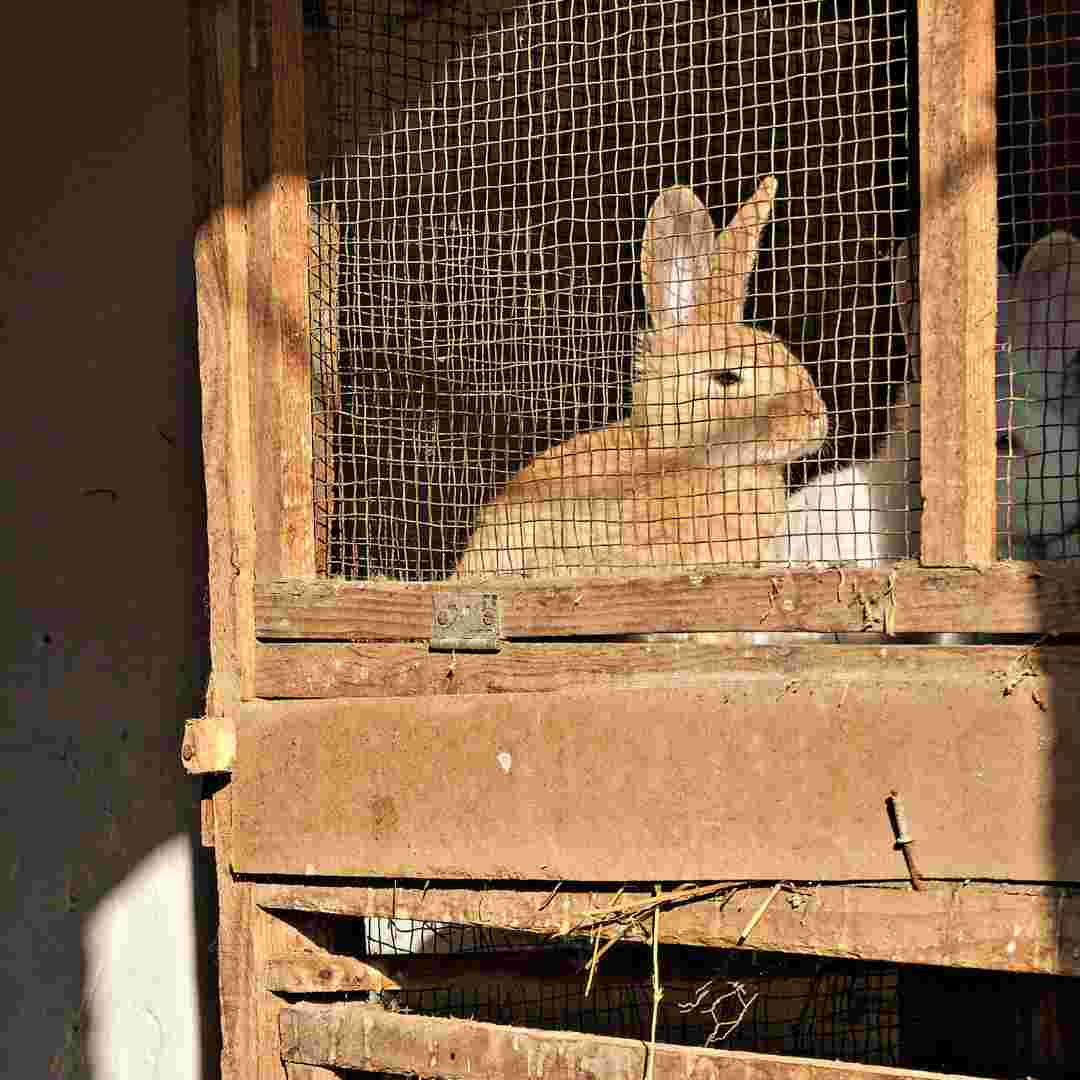Which Rabbit Cage is Best?
Your rabbit's cage is crucial to its safety and comfort. Your rabbit's cage should be large, ventilated, and simple to clean.
Rabbit cages are usually wire. Metal wire mesh cages provide ventilation and vision. Wire cages are simple to clean and provide rabbits with plenty of room to roam. However, wire mesh might hurt your rabbit's feet, so use wood or cardboard for flooring.
Plastic cages work too. These robust plastic cages have firm floors. Plastic cages are more costly than wire cages but easier to clean and ventilate.
Lastly, consider a hutch. Wooden hutches have solid floors. They're spacious and simple to clean for your rabbit. They are more costly and less ventilated than wire or plastic cages.
No matter the cage, your rabbit needs room and ventilation. To promote rabbit comfort, offer sturdy flooring. The correct cage can keep your rabbit secure and comfortable.
What Accessories Should Your Rabbit's Cage Have?
For your rabbit's comfort and safety, incorporate a few necessary things while putting up its cage. Water, hay feeder, litter box, and toys.
Your rabbit needs a water bottle for fresh, clean water. It should be hung on the cage and examined often.
Your rabbit needs a hay feeder too. This should be in a cage corner and loaded with new hay daily.
Cages should have litter boxes. Wood shavings or paper pellets should be used to fill this cage corner.
To stimulate and exercise your rabbit, place toys in the cage. Balls, chew toys, and tunnels are examples. To keep your rabbit safe, inspect the toys often.
These cage accessories will keep your rabbit secure and comfortable.
Rabbit Cage Sizes
Your rabbit's health depends on the cage size you choose. Rabbits require a spacious cage to move about, so choose one accordingly.
Choose a rabbit cage based on its size. A rabbit needs four square feet of floor area per pound. For example, a five-pound rabbit needs 20 square feet of floor area. The cage should also be tall enough for your rabbit to stand on its hind legs without its ears hitting the top.
Cage type is also crucial. Most rabbits live in wire cages, which may be unpleasant. Make sure a wire cage has a sturdy bottom and hay or straw lining. Your bunny may relax on this.
Finally, consider cage placement. Rabbits require fresh air and sunshine, so position the cage in a well-ventilated location. The cage should also be silent and free from distractions.
You can provide your rabbit with a secure, pleasant home by choosing the correct cage size. With the correct cage, your rabbit may move freely and live a healthy and happy life.
What Should Your Rabbit's Cage Bedding Be?
Bedding is crucial for rabbit comfort and safety. Choose safe, comfy, and easy-to-clean bedding.
Rabbits usually sleep on aspen or pine shavings. Your rabbit may relax on these absorbent pads. Cedar shavings may poison rabbits due to their fragrant oils.
Recycled newspaper or paper pellets make good bedding. Absorbent and simple to clean, they are more costly than wood shavings.
Straw absorbs less than wood shavings or paper-based bedding. It may matt and clump, making cleaning harder.
Finally, you can bed with hay. If you give your rabbit hay, it may rest on this. Hay is harder to clean than other bedding.
Always keep your bedding clean and dry. To keep your rabbit safe, change the bedding often.

Making Your Rabbit's Cage Safe and Fun
Healthy rabbits need a secure and exciting cage. As inquisitive and lively creatures, rabbits need a habitat that stimulates exploration and plays. Here are some cage-safe and exciting rabbit tips.
First, check the cage's size. Your rabbit may suffer in a tiny cage. The cage should be durable and simple to clean and disinfect.
Second, amuse your rabbit with plenty of toys and activities. Chew toys, tunnels, and other playthings are examples. Treats may help keep your rabbit entertained.
Third, keep the cage quiet and comfy. Rabbits are stressed by loud sounds and bright lights, so keep the surroundings tranquil.
Fourth, give your rabbit different bedding. Including hay, straw, and shredded paper. These fabrics will warm your bunny.
Last, clean the cage. To keep your rabbit healthy, clean and change the cage bedding.
These recommendations can help you design a safe and stimulating rabbit cage. This will keep your rabbit healthy and happy for years.